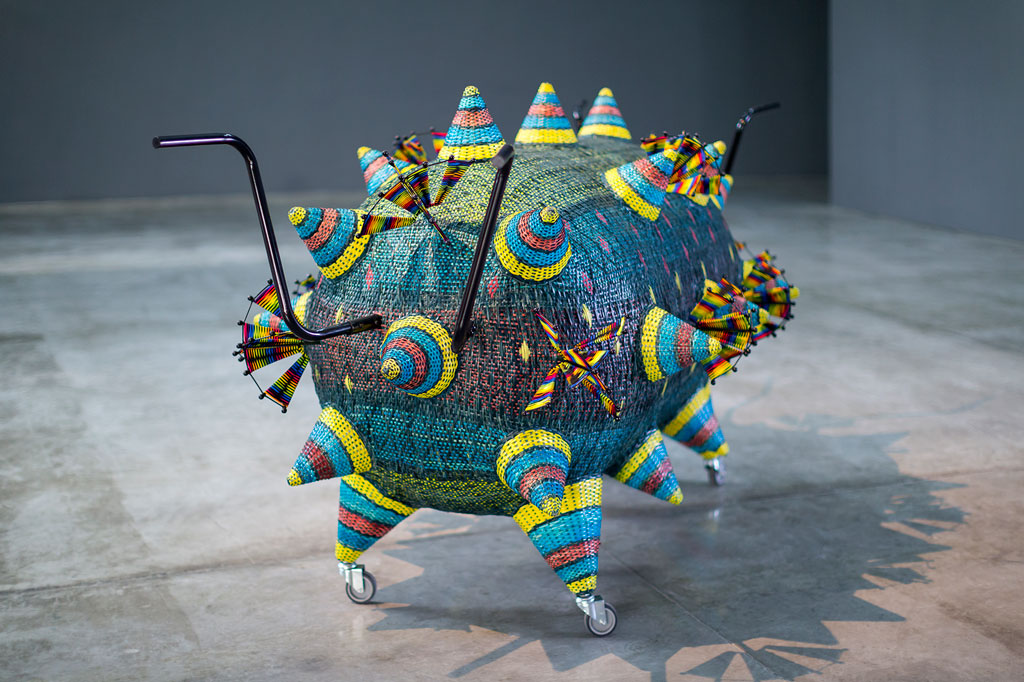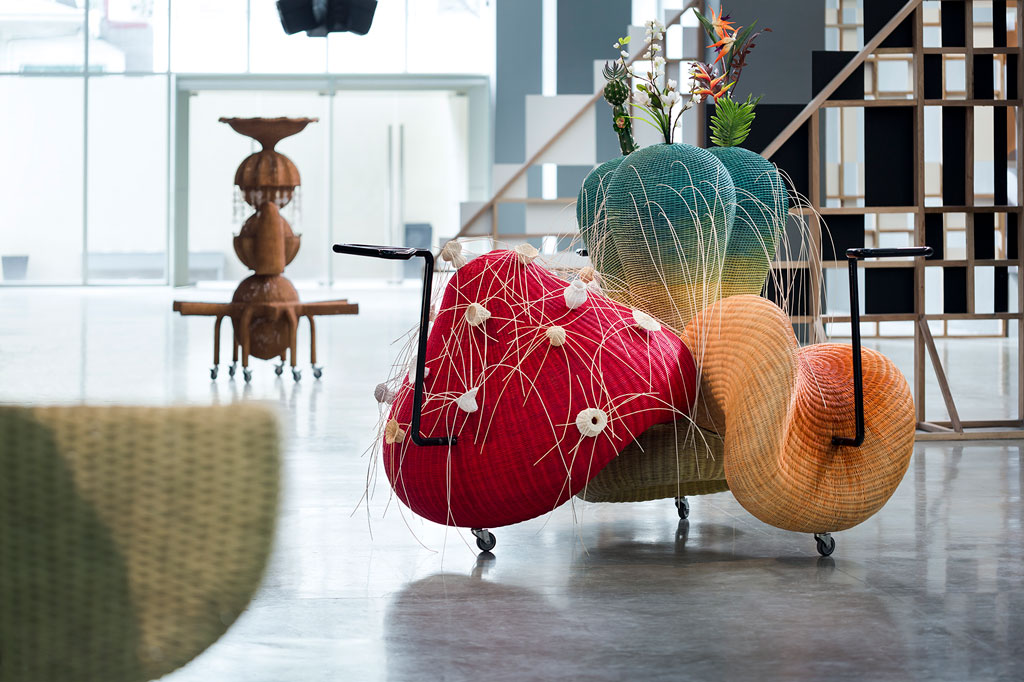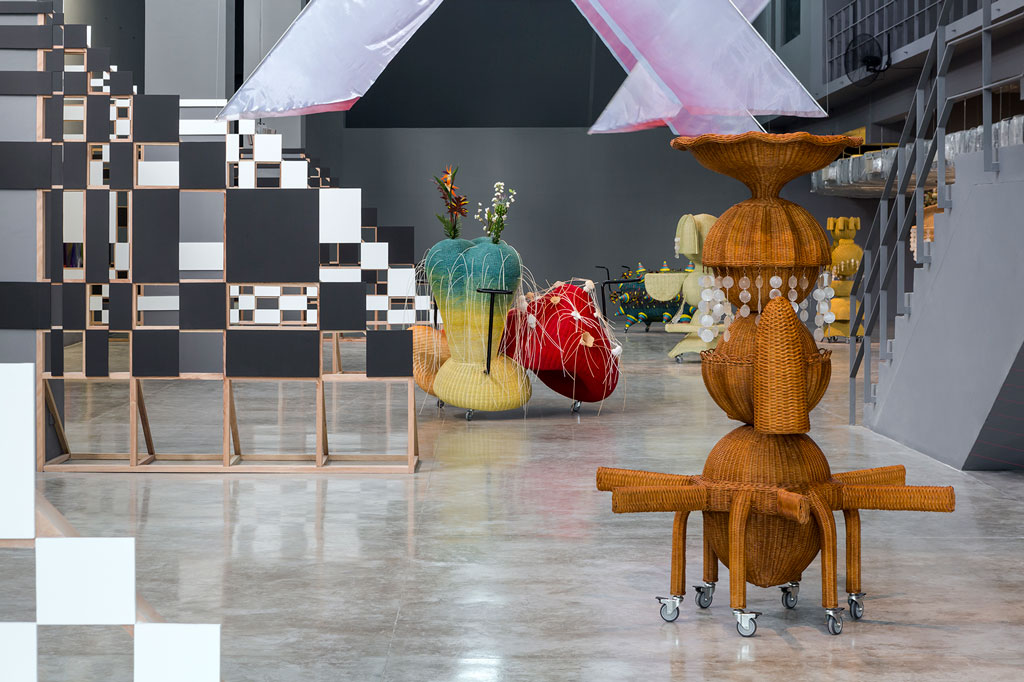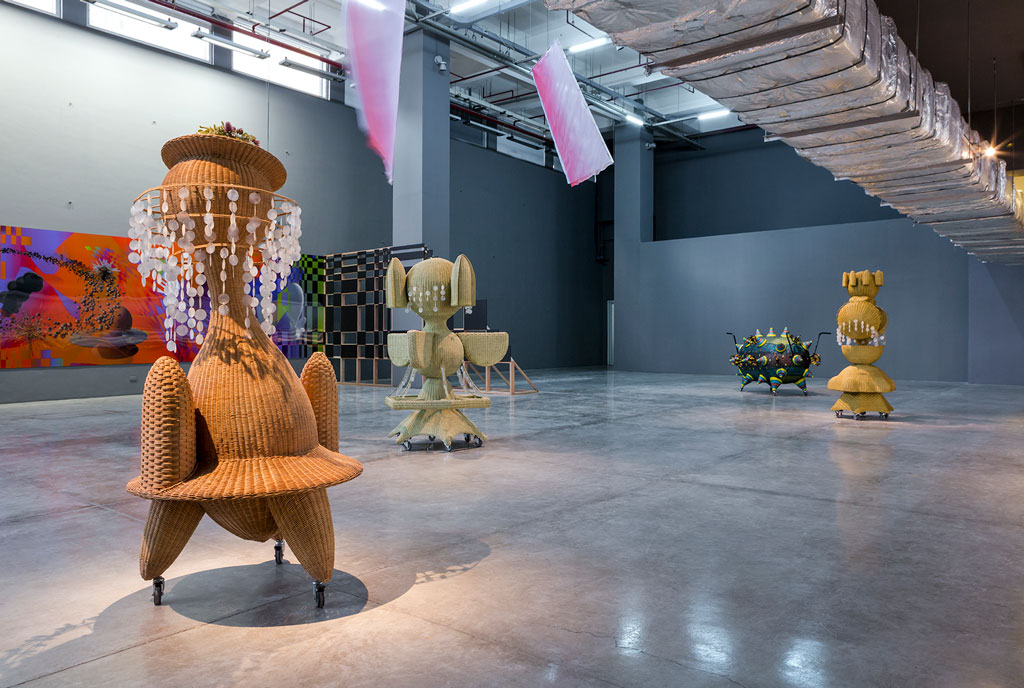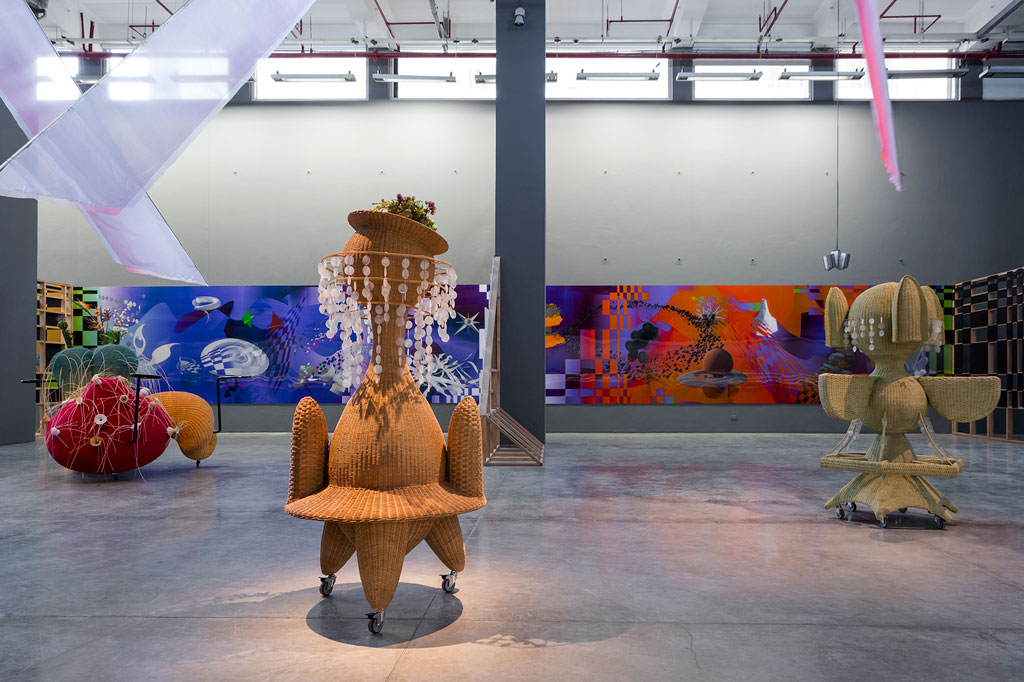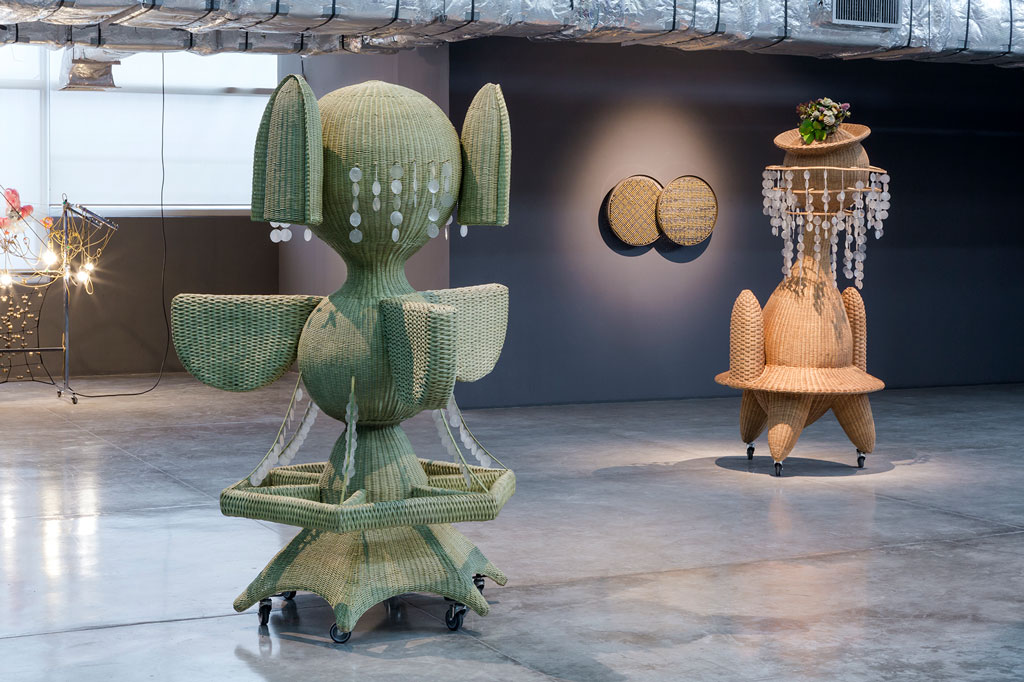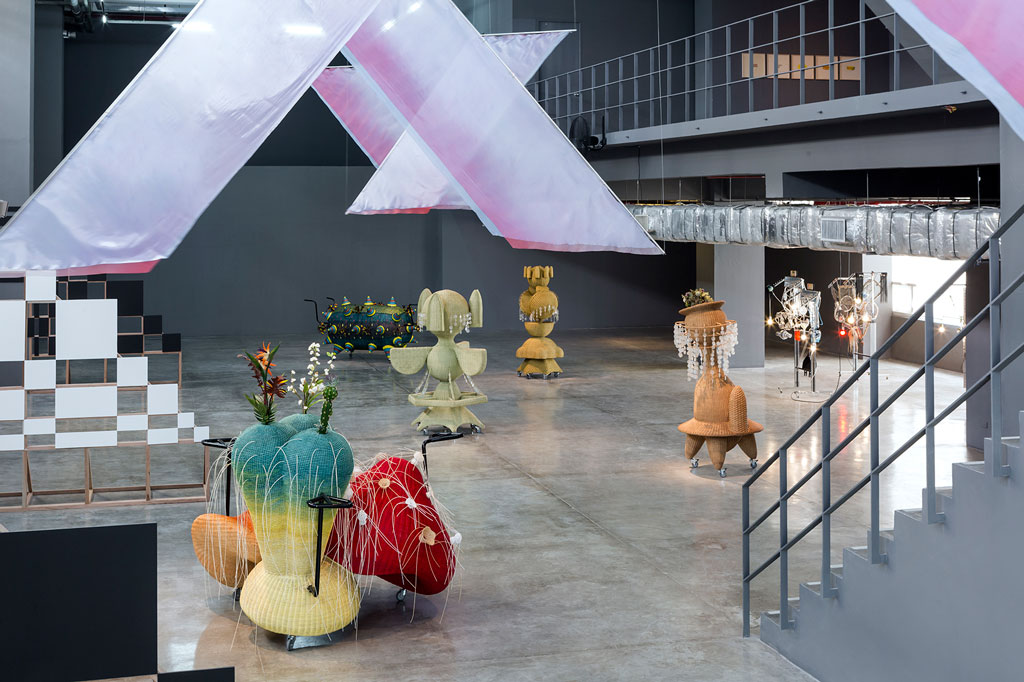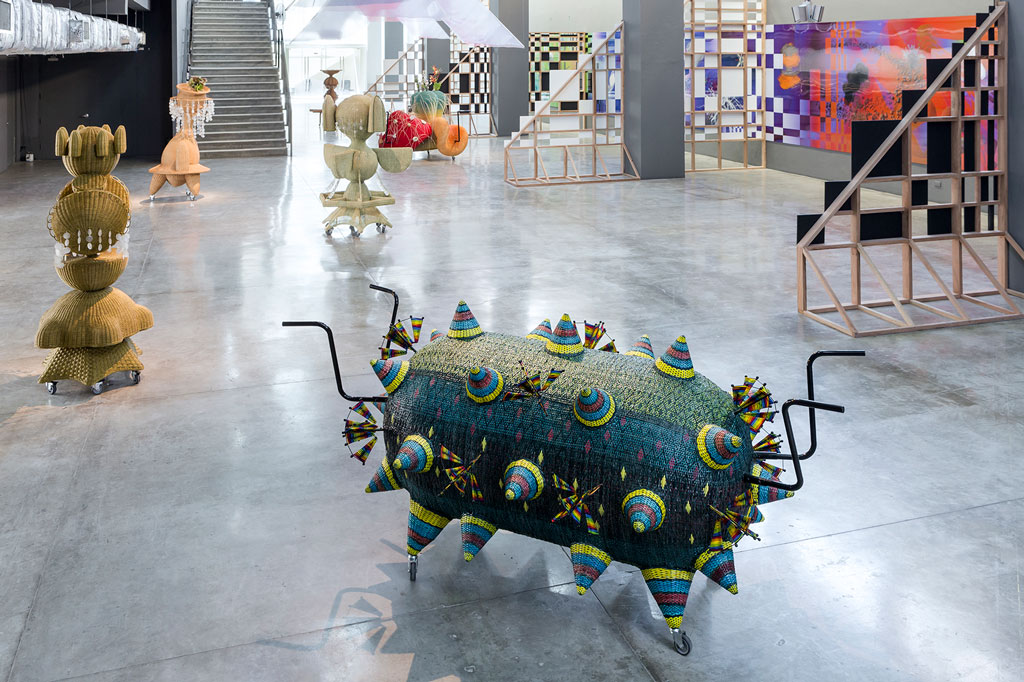ART-PRESENTATION: Haegue Yang-The Cone of Concern, Part II
 One of the most widely shown artists of her generation in the world today, Haegue Yang continues to live and work between the cities of Seoul and Berlin since the mid-nineties. She is known for producing a form of conceptual language and an aesthetic vocabulary τhat is uniquely interwoven. Whichever aspect of Yang’s practice is mentioned, her engagement is decidedly non-binary, tending to unsettle ideas, concepts and forms she previously sought to establish (Part I).
One of the most widely shown artists of her generation in the world today, Haegue Yang continues to live and work between the cities of Seoul and Berlin since the mid-nineties. She is known for producing a form of conceptual language and an aesthetic vocabulary τhat is uniquely interwoven. Whichever aspect of Yang’s practice is mentioned, her engagement is decidedly non-binary, tending to unsettle ideas, concepts and forms she previously sought to establish (Part I).
By Efi Michalarou
Photo: MCAD Archive
Haegue Yang’s title of the exhibition, “The Cone of Concern”, refers to a graphic tool for weather forecasting which especially traces the path of an oncoming storm or tropical depression. By overlaying circles on areas that could possibly be in the range of effect or path of a hurricane, cyclone or typhoon, resulting in a graphic image of a cone, one can try to anticipate which geographical mass will be affected in the coming days. Haegue Yang often pairs exhibitions in secret by having certain elements flow seamlessly from one exhibition to another despite geo-political differences and seemingly irrelevant or remote circumstances. Similar to the idea of chaos theory, this method draws attention to how things are connected through commonly shared uncertainties and concerns. In this case, Yang has paired “The Cone of Concern” at MCAD with “The Cone of Uncertainty” at The Bass Museum, last year. The two exhibitions allude to weather-specific phenomena that hugely concern the regions and their populations where both institutions are located. As an outsider, Yang sees the possibility of collaboration and a sense of community being built around difficulties faced together. Occupying the longest wall space of the main gallery is the lenticular wall piece “The Fantastic Warp and Weft of a Tropical Depression” (2020) which is a large panoramic mural in three parts. Populated with motifs in 3D graphic quality, the images float in an undefined expanse, swirling in an extraordinary color scheme that depicts a projected imaginary of a post-human space through the digital manipulation and illustration of colors and symbols like wind speed, directionals, temperature, weather fronts, atmospheric pressure, isotherms taken from meteorological maps. By employing the technique of lenticular printing as the carrier for the image, there is an attempt to create a low-tech slap-stick-like animation, generating the illusion of depth and movement. This effect is, however, only activated when the viewer walks alongside the mural, changing their perspective of the piece.
The new commissions are inspired by encountering things, as well as through observation and various conversations during the artist’s multiple visits to Manila. The exhibition also demonstrates influences from weaving patterns of traditional Philippine textiles, especially the whirlwind pattern of the local binakol from Ilocos, which are present in structures that will formally delineate the space of the museum. Yang was initially struck by the similarity of the whirlwind pattern with motifs found in many 60s Op Art pieces. This unexpected overlap of ornamental/optical abstraction both in Western art history as well as in local ethnic craft tradition captured Yang’s attention: how some things can exist as seemingly unrelated doppelgangers across histories and cultures. The language of weaving continues in the six free-standing handwoven rattan sculptures developed between the studio in Seoul and the workshop in Manila. The ensemble is made up of two groups, the first set titled “Randing Intermediates – Inception Quartet” and the other “Underbelly Alienage Duo”. These two groups of anthropomorphic-sized sculptures present hybrid creatures, with this particular set of Intermediates characterised by being upright with animalesque and arthropod-like features, while the “Alienage Duo” references sea creatures. Resembling a duck, or an ant, some incorporated with artificial plants, the sculptures bring to mind collective memories of the fairytale, of mythology, Korean animism, Cuban Santeria, Haitian voodoo. While the artist has used weaving as critical inquiry into the notion of folk as a conventional term to define identity and belonging as being something fixed and given, the “Randing Intermediates” describes a new sculptural category, which is more authentic in the sense that it hews closest to the traditional practice of weaving. The work is derived from the most basic weaving technique which uses a single rod as the main stake around which the rest of the material is woven around. The weaving terminology found amid the exhibition brings out, through the artist’s complex intertwining of ideas, materials and traditions under the phenomena of weather, a temperamental and all-encompassing natural phenomenon that speaks a language understood across countries and populations. As Yang sees it, phenomena are autonomous beings with their own logic of existence … imbued with powers of association.
Also present in the exhibition are her “Totem Robots” from 2011 when her works, informally referred to as light sculptures, reached its climax. The three works presented here, “Totem Robot – Askew”, “Totem - Forward” and “Totem – Sidewise” are part of a larger body of 33 sculptures collectively titled “Warrior Believer Lover”. Alongside the artist’s anthropomorphic configurations are works with a parallel investment in geometry and ornamentation. Yang’s affinity for these forms are due to her resistance to binary models, and considers geometry and ornamentation in modern and ancient thought, as having both rational and spiritual orientations. The artist sees the connections that flow across these two systems as defiant of presumed binarist equations. In the new production of her wall-mounted sculptures, “Sonic Rotating Identical Circular Twins – Brass and Nickel Plated #1” (2020), for example, the circle is expressed and activated through its rotation, while the many bells contained within the disc lends the object its sonic element. The metallic rattle of rolling bells produces a silvery sound that calls to mind a Korean shaman’s ritual. The mezzanine floor presents her graphic works, set against angled wall structures that appear set to tilt, threatening to topple an otherwise formal space into disarray. Yang also chose to share print productions made in collaboration with the Singapore Tyler Print Institute (STPI). During her residency, Yang developed prints that incorporated spices and natural plants, as well as various eatables. The prints found in this section reflect both colonial as well as contemporary history around spice, food and eating, with the artist once again blurring the definitions between natural and industrial. Amongst the prints in this section is a monoprint with tiny indentation marks showing through a yellow haze. “Cutting Board Print – Yellow Ginger #1” (2012) is done through a printing process of vegetables sliced directly on paper, revealing another of Yang’s recurring gestures of having material residue hinting at the process. Surrounding all the works in the exhibition in a seeming embrace is a sound piece transmitted through a polygonal fixture which the artist calls a Sound Fruit, perhaps the most current and non-material amongst Yang’s oeuvre. Working with sound has given Yang the opportunity to add her voice, which is at the same time not hers as it is altered and manipulated using AI technology. The disembodied sound thus takes on a number of different accents, lilts and personalities, it is everyone and no one, an identity scrubbed by the overlay of inorganic voices. These overlapping voices are similar to her use of bird songs recorded from DMZ to pervade the space, nature as a silent observer, but an ever present backdrop to the vicissitudes of the human condition.
Photo: Installation view: Haegue Yang, The Cone of Concern, MCAD Maynila, 2020-2021, Courtesy Museum of Contemporary Art and Design (MCAD)
Info: Museum of Contemporary Art and Design (MCAD), Ground Floor, Benilde School of Design and Arts Campus, Dominga Street, Malate, Maynila, Kalakhang Maynila, Duration: 15/10/2020-28/2/2021, Days & Hours: Tue-Sat 10;00-18:00, Sun 10:00-14:00 (book here 1 day at least one day in advance), www.mcadmanila.org.ph

